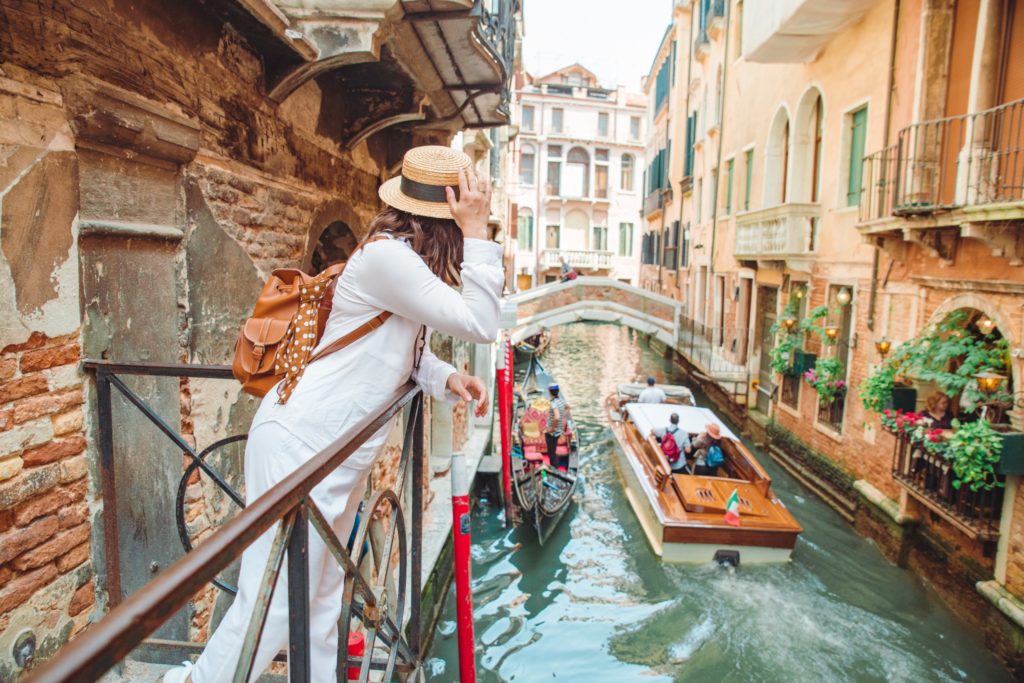
Italian citizenship is a huge lifehack. Having a second passport opens so many doors and allows you to live, work, vote, study, and own property in another country. This can make your move (or life) abroad much easier because it negates the need to worry about visas and work permits in your second home country ever again. And if you’re lucky, your second citizenship opens opportunities towards a wider region, not just one single country.
Well, Italian citizenship is that citizenship. Not only is it a way to honor your heritage, it’s also a tangible “in” to the European Union. With Italian dual citizenship, the wider doors of the entire European Union open to you in a very real way. In this post, we’ll explain everything you need to know about starting your path towards an Italian passport.
Italian citizenship by descent: not such a secret anymore
Word has definitely gotten out about Italian citizenship. Just like we previously mentioned, not only are people with Italian passports citizens of Italy, but they are also citizens of Europe. To put it bluntly, this is a huge perk. It means that Italian citizens can live, work, study, and travel in the entire European Union without the need to justify their presence, ever. For people seeking global mobility or wishing to retire in, move to, or study in Europe this is a huge benefit.
One of the most straightforward ways of acquiring Italian citizenship is by descent. Almost uniquely in the world, Italy allows people of Italian heritage to claim citizenship if their parents, grandparents, great grandparents, or great-great grandparents—and beyond—were Italian. There are of course other rules to qualifying, but it is by far easier to acquire Italian citizenship by descent than by marriage or other means.
For various historical and sociopolitical reasons Italian citizenship law is very lenient towards people of Italian ancestry born in places like the United States, Canada, the UK, Brazil, Argentina, and elsewhere. This means that most Italian Americans qualify for Italian passports if they can meet the (few) established rules. According to 2019 American community survey, there are currently more than 16,000,000 Italian Americans living in the U.S. That’s a whole bunch of potential Italian passports!
Before we get started, here’s a little bit more about us. I started as a one woman operation in 2005 helping people get Italian citizenship by providing free advice and doing paid Italian translations for citizenship applications. Then in 2009, I made my own heritage official and got an Italian passport while living and working in Reggio Emilia, Italy. Today, Get Italian Citizenship has grown into a boutique consulting firm all about—you guessed it—helping people get Italian citizenship.
How I claimed Italian citizenship

I claimed Italian citizenship by descent over 10 years ago. Like I said above, Italy allows children, grandchildren, great grandchildren (and beyond) of those born in present-day Italy to qualify, provided they meet a few key criteria. Both Italy and the United States allow dual citizenship, so I can hold both of my passports legally.
Though it was so long ago, the process is still fresh in my mind. Here’s a look at what I did to follow my claim and get my passport.
The process of claiming Italian citizenship
I started the process of claiming my Italian citizenship when I was still in high school. As a translator, I often worked on people’s documents for their citizenship applications and it got me wondering about my own eligibility. At the same time, I serendipitously came across my grandfather’s naturalization record in the basement; this solidified my path towards citizenship. I began collecting the various genealogical information and vital records to stake my claim. Back then, it was slow going as there was little to no information online about the process and I learned as I went. In short, I had to get a handful of documents, which included:
- My birth certificate with an apostille
- Mom and dad’s marriage certificate
- Dad’s birth certificate
- Mom’s birth certificate
- Grandpa’s birth certificate
- Grandma’s birth certificate
- Grandparents’ marriage certificate
- Grandpa’s U.S. naturalization record
I obtained all new copies of these records both from the U.S. government and from Italy. I had to get birth records from Italy and obtain all U.S. records (and apostille them). Luckily, my grandparents were still alive, I knew all the dates and places of birth and marriage, there we no divorces (which meant fewer documents) and I was able to translate my own documents into Italian. That part was easy.
What I didn’t anticipate was how difficult it would be to deal with the Italian consulate. After I made an appointment to hand in my documents, I showed up to my meeting ready to go. Imagine my surprise when my documents were rejected outright due to a one-letter spelling discrepancy in my grandfather’s and my last name. It’s embarrassing to admit today, but I felt so defeated after years of slowly gathering documents that I left the office crying and wanting to give up (not a ringing endorsement of Italian citizenship, I know… but it gets better!).
As luck would have it, I still had a visa appointment because I wanted to study in Italy. So, I continued with that appointment, got my study visa, and landed in Italy in 2009. I had my Italian citizenship documents with me and I tried my luck at applying there directly and “skipping” the consulate. Because I was a legal resident in Reggio Emilia, the local anagrafe office took my records without question; they didn’t even bat an eyelash at the discrepancy that tripped the consulate up! I felt a wave of relief wash over me. Exactly two months and twenty-one days later, I received the letter confirming that I was a fully-recognized Italian citizen. And that’s how I became the only Italian citizenship service provider to apply in Italy, a distinction I’m proud of to this day.
Getting my Italian passport
Most people who are successfully recognized will go on to get their Italian at their local Italian consulate. After recognition of citizenship, they register in AIRE (Italian acronym for Registry of Italians Residing Abroad). Once that’s done, they make an appointment for their passport, hand in their application along with payment and photos, and wait for processing.
In my case, since I was (and still am) residing in Italy I obtained my passport directly at the local passport office. I did not have to register in AIRE before applying. If you apply in Italy and skip the consulate, you can apply at your local passport too.
Rules to qualifying
Think of Italian citizenship like a chain. For it to stay intact, no link of the chain can be broken. The only way to “break” the chain is by loss of Italian citizenship. And before August 15, 1992, Italians automatically lost citizenship when they became citizens of another country.
Therefore, if your Italian ancestor was not yet a US citizen (aka, still an Italian) at the time his or her child was born in the US, then you most likely qualify. Here are the more specific criteria to meet:
- Your Italian ancestor must have been alive on or after March 17, 1861. This is the date of Italian unification. Before this date, there was no such thing as Italy. And no such thing as Italy means no Italian citizenship. Therefore, if your ancestor died before this date, then he or she was never actually an Italian citizen.
- Your ancestor never became a US citizen. If this is the case and you meet Rule #1 above, congratulations! You automatically qualify. But read on to see if you are what’s known as a “1948 case.”
- If your ancestor did become a US citizen, it must have occurred both after his or her child was born in the US and after July 1, 1912. If your ancestor became a US citizen before that date, you can still qualify if his/her US-born child was 21 or older at the time of parent’s naturalization.
- Check if you have any women in your direct line. For you to apply at a consulate, their children must have been born after January 1, 1948. Otherwise you have to hire an Italian attorney who will represent you in the Court of Rome (see “1948 Cases” below).
- If your Italian ancestor became a US citizen after August 15, 1992, you automatically qualify but you may still be a 1948 case.
What are 1948 cases?
Without going into too much detail, Italy did not allow women to pass on citizenship to their children until January 1, 1948 (with very few exceptions). If there are any women in your direct line of citizenship, check the dates their child(ren) were born. If before January 1, 1948 you must hire an Italian attorney to represent you in court on the basis of this discriminatory rule. Since 2009, thousands of people have gone through these so-called 1948 cases and they have a high success rate. If you need an Italian attorney, we can help.
How you can become an Italian citizen, step-by-step

Note: The first thing to do before anything else is make sure your ancestors were actually from Italy. For most people this won’t be a problem, but you’d be surprised: the country we now call Italy today wasn’t always a unified nation. Some historic parts of Italy are no longer Italian territory, and some previously foreign territories are now part of Italy. When in doubt, check that your ancestor’s birthplace is part of Italy today.
Step 1: Find your ancestor’s naturalization records (or not)
If your Italian ancestor became a US citizen, this is the document which will determine your eligibility. You can use resources like Ancestry to find digitized records, if they exist. You’ll want to order official copies of these records from NARA, USCIS, and county clerk’s offices, depending on where your ancestor naturalized.
Step 2: Use the information on the naturalization records to get your ancestor’s birth certificates
If you are not sure where your Italian ancestor was from, you can often find the pertinent info on his or her naturalization records. Use that to obtain copies of his/her birth record from Italy (“estratto dell’atto di nascita”). If no naturalization occurred, you might find this info on other records such as census documents, ship manifests, alien registration cards, WW2 or WW1 registration cards or the like.
Step 3: Obtain your US records (and then apostille and translate them)
Start gathering your US birth, marriage, death, and other records. Get them apostilled and translated into Italian.
Step 4: Go to your Italian citizenship appointment
Depending on your consular jurisdiction, you might want to actually do this before anything else. Some consulates book appointments very far in advance. They are free at the time of booking but you must pay an application fee of 300 euros at the time you physically hand your documents in.
Step 5: Get recognized!
The Italian government has up to 24 months to recognize you as a citizen once you hand everything in. Once you’re recognized, you should enroll in AIRE if your consulate does not do it for you. Then, make a passport appointment and you’re good to go. You can now enjoy your rights as a full-fledged Italian citizen, including obtaining a copy of your newly registered Italian birth certificate.
How we can help
Get Italian Citizenship is a white glove, full service firm offering Italian citizenship assistance. Whether you need one-off documents or a whole application, we can assist you. Contact us today to get started!
